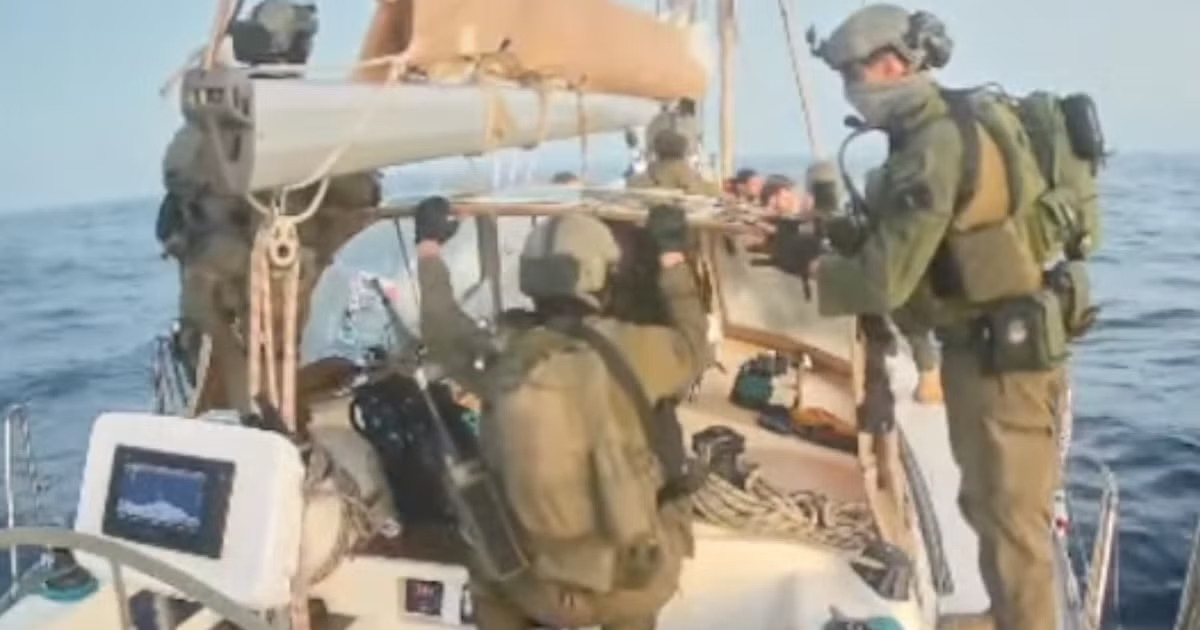
NGOCSTIP – Israel intercepted a massive humanitarian flotilla in international waters on October 2, 2025, sparking outrage and condemnation across the globe. The Global Sumud Flotilla, made up of 43 vessels and nearly 500 participants from 46 countries, attempted to break the long-standing Israeli naval blockade of Gaza. Israeli naval commandos boarded dozens of ships 75 nautical miles from shore, detaining 443 activists in the process. Among the detained was climate activist Greta Thunberg, seen on video wearing a keffiyeh and her trademark frog hat. The interception occurred while Israel continued its military operations in Gaza City, which have displaced hundreds of thousands and caused widespread civilian casualties. One vessel, the Mikeno, reportedly reached Palestinian waters before communication was lost. Another, the Marinette, remained in contact. Authorities announced plans to deport the detained activists back to Europe, defending the operation as necessary to prevent unauthorized entry into an active conflict zone.
Israel now finds itself at the center of international criticism following its actions against the Global Sumud Flotilla. Leaders from various countries, human rights groups, and legal experts described the naval operation as a violation of international maritime law. According to the United Nations Convention on the Law of the Sea, a state’s jurisdiction extends only 12 nautical miles from its coast. The flotilla was stopped well beyond that range, in international waters.
Miriam Azem from Adalah, a legal advocacy group, described the seizure as an abduction from the high seas. Israel’s foreign ministry dismissed the convoy as a provocation, arguing that the vessels posed a security threat and could potentially transport weapons to Hamas. However, the flotilla organizers asserted their mission was peaceful and symbolic. Their goal was to deliver humanitarian aid and bring global attention to the crisis in Gaza. Videos and reports from the scene have fueled protests across Europe and the Middle East.
“Read about: Italian PM Urges Global Sumud Flotilla to Halt Gaza Blockade Run: Tensions Soar!”
Several activists on board the flotilla described aggressive tactics by Israeli forces during the interception. Military drones harassed some boats, jammed their signals, and even rammed vessels intentionally. Greg Stoker, a US Navy veteran on one of the ships, filmed a video from the deck as Israeli vessels without transponders circled nearby. He said forces ordered them to shut down the engines and warned of serious consequences if they disobeyed. A Telegram video captured Israeli forces blasting a ship with water from a high-powered hose, labeling the act as water cannoning. The flotilla’s press team accused Israeli naval ships of damaging communications systems to block distress signals and interrupt livestreams. Activists expressed shock after experiencing the sudden military boarding in the middle of the sea. These accounts added weight to arguments that Israeli forces used excessive force and ignored maritime protocols for non-combatant missions.
“Read more: History Repeats? Federal Government Shutdowns as Trump Fails to Strike a Deal!”
One of the most notable detainees was Swedish environmental activist Greta Thunberg. Video footage captured her seated on one of the vessels as armed personnel surrounded her. The Israeli foreign ministry confirmed her detention and stated that she and the other passengers were safe. Plans were announced to begin deportation procedures once the activists reached Israeli ports. Thunberg has long criticized the Israeli blockade and joined the convoy to call attention to the humanitarian crisis in Gaza.
Her participation gave the flotilla additional media attention, which significantly raised the pressure on Israeli authorities. Global media networks covered the story intensively, drawing even more scrutiny to Israel’s handling of the situation. The foreign ministry labeled the entire operation as a pro-Hamas stunt and sought to control the narrative by posting regular updates. Nonetheless, the presence of high-profile activists added to the diplomatic costs of the interception and fueled calls for international investigations.
The flotilla interception dominated headlines while Gaza’s humanitarian crisis worsened. Defense Minister Israel Katz confirmed that troops seized the Nitzarim corridor completely. Forces split Gaza into two, securing control from north to south. Katz urged Gaza City civilians to evacuate or face military response. UN officials and aid groups slammed the warning as inflammatory and reckless. Gaza’s health ministry reported increased deaths and worsening starvation across multiple districts. They highlighted failing infrastructure and hospitals overwhelmed by endless casualties. Protests erupted in Berlin and Rome with marchers holding flotilla photos.
Crowds shouted anti-blockade slogans and called for urgent international pressure. Demonstrators demanded freedom for detained activists and an end to the siege. Flotilla supporters described the mission as aid and peaceful defiance. They aimed to challenge Gaza’s isolation and spotlight the ongoing blockade. Social media amplified updates as users rallied in digital protest. Global outrage surged as bombardments continued and ships were intercepted violently. Public focus stayed locked on both the battlefield and the sea.
This article is sourced from www.nbcnews.com and for more details you can read at ngocstip
Writer: Sarah Azhari
Editor: Anisa